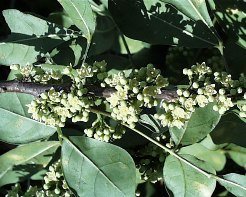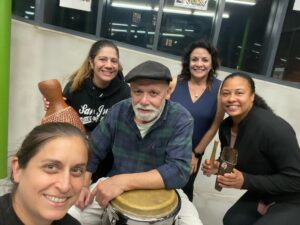Mata Siguaraya
by Francisco G. Gómez
In Cuba the Yoruba of West Africa are known as Lucumí. The Yoruba were brought as slaves to the island of Cuba in the nineteenth century during the Middle Passage. They are the descendants of diviners and herbalists who understand the mysteries intrinsic in nature. For them, herbs and plants are not mere sources of food and medicine. The Lucumí revere and respect their flora from a spiritual perspective as well. Certain plants and trees, like the Siguaraya (trichilia havanenses), which they believe is an Oricha, a force of nature and the Ceiba tree (ceiba pentandra), have powers for healing the body but more so, for healing the spirit and soul as well.
For tree huggers and people who talk to their plants, this isn’t difficult to understand at all!
In the spiritual folklore and mythology of Cuba, as in other nature based cultures like that of the Lucumí, permission is asked of sacred plants and trees before they are cut or felled. The great Cuban singer and band leader of the 1940s,50s and 60s, Beny Moré, sang a beautiful song written by the outstanding pianist and composer Lino Frías, dedicated to the Siguaraya, a plant considered medicinal and magical by the Lucumí. Lino made this evident when he wrote Mata Siguaraya; he says:
En mi cuba nace una mata, que sin permiso no se
puede tumba eh. No se puede tumba eh, porque son
Orisa. Esa mata nace en el monte, esa mata tiene
poder. Esa mata es Siguaraya!In my Cuba grows a plant, without permission you may
not cut it down. You may not cut it down because it is an Oricha.
That plant grows in the forest, that plant has powers, that plant is Siguaraya!
You can hear a clip of the song here:
Some characteristics of the Siguaraya:
Cuba is just one of a few places where Siguaraya can be found. It grows freely in the forest and on the banks of brooks. The plant or tree can extend up to 12 feet in height, and its trunk can grow to about 40 centimeters in diameter. It blooms from January to April and is recognizable by the fullness of its greenish flowers and foliage, unlike the other plants that inhabit its surroundings. The plant produces a tasty dark honey nectar that is very beneficial because it enhances health.
The world has lost its connection with nature by using industrial methods of deforestation, such as those used in Brazil, or the complete felling of the forests in Haiti and certain parts of Indonesia, for example. The resulting climate change, devastating mud slides and drying out of lakes and rivers, amongst other things, show us the negative consequences of our environmental irresponsibility and its impact on Mother Earth and her inhabitants.
I recently saw a documentary that is totally silent, however, quite moving and compassion stirring when you see what has become of primates in Indonesia because of the wanton disregard for the forests and their eco-systems. The film is 47 minutes long, check it out below:
http://topdocumentaryfilms.com/green-death-forests/
Seeing this film has made me reflect deeply about Siguaraya being a magical plant, and the possibility that the magic could be lost if the forests were no longer there for the Yerberos (herbalists) and Paleros (tree workers) to practice their alchemy.
Although the use of plants by modern day society may seem alien or even superstitious outside the realms of food, the spiritual aspects of leaves, herbs, bark and trees should not be disavowed. It’s more than some New Agers or some men of the cloth burning incense or concocting spells and potions by using leaves and roots in their ritual practices. It’s being blessed by nature and having the opportunity to touch and thereby understand the mysteries of life all around us.
So you may use a sacred plant, such as Siguaraya, to purge tangible bad elements from the body, but also understand that using it for a sense of well being in its other mediums is just as valid, thus enhancing the total experience.




